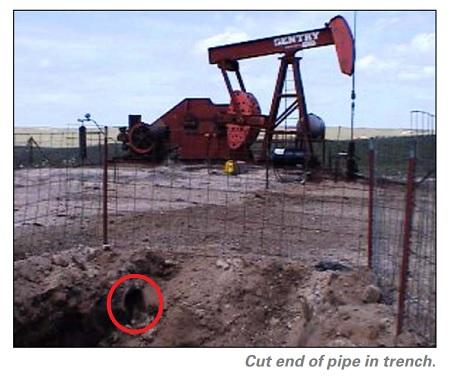On a clear, sunny day in an oil field, a flash fire erupted during routine maintenance work on a crude oil flow line. Three workers were present – one was killed, another hospitalized with severe burns. This type of accident is preventable with proper safety procedures. We analyze what went wrong and key learnings to avoid similar tragedies.
The Incident
Three workers were repairing a leaking section of underground crude oil pipe connecting a well to oil storage tanks. After digging a trench to access the pipe, they cut out a 6-foot segment using a cold cutting tool. Attempting to rejoin the pipe ends, two workers found their manual pipe threading machine dies were too dull. New replacement dies were requested from the office.
Without replacing the original manual threader dies, the new dies were installed in an electric threading machine. As two workers operated this electric device in the trench, flammable oil vapors ignited, engulfing the area in a sudden, intense fireball. A third worker discharged two fire extinguishers to suppress the flames.
One 26-year old worker, employed only two months, died of severe burn injuries. His coworker was also hospitalized with second and third-degree burns on his arms, neck and face before being released.
Hazards and Failures
This accident reveals multiple safety lapses regarding hazardous location work, fire prevention, and excavation procedures:
- No formal hazard analysis or monitoring for dangerous oil vapors was conducted, though cold cutting oil pipes predictably releases flammable gases.
- Allowing open ignition sources (the electric threader) without testing the trench atmosphere showed lack of safety protocols.
- The electric device was inappropriate for a potentially explosive environment. Proper classification and safety procedures for hazardous locations were not followed.
- Failure to require fire-resistant clothing left workers unprotected from flash fire hazards.
- Minimal safety training and planning was provided, especially for the short-term employee killed.
- Working inside an excavation brings engulfment dangers, intensified by flammable atmosphere risks.
Preventing Recurrences
Multiple prevention opportunities existed to avoid this tragedy:
- Perform thorough hazard analysis before work, considering vapor releases, ignition controls, trench environments, and lockout procedures.
- Classify locations correctly and only permit electrical gear approved for hazardous areas to limit ignition sources.
- Enforce a rigorous hot work program, including atmospheric testing and ventilation to keep vapors well below 10% of lower explosive limit.
- Provide specialized training for working within excavations and confined spaces safely. Ensure competency with flammable atmospheres and other oilfield hazards.
- Mandate flame-resistant clothing to protect from flash fires and other potential exposure.
- Follow a comprehensive safety management plan addressing hazard analysis, training, protective equipment, and clearly defined procedures.
A Life-Saving Opportunity
Workplace fatalities devastate families and communities. While risks can never be eliminated in hazardous industries, proper safety culture and procedures prevent most incidents. By analyzing this tragedy and implementing key learnings, companies can drastically improve worker safety and avoid heartbreaking loss of life.
References










